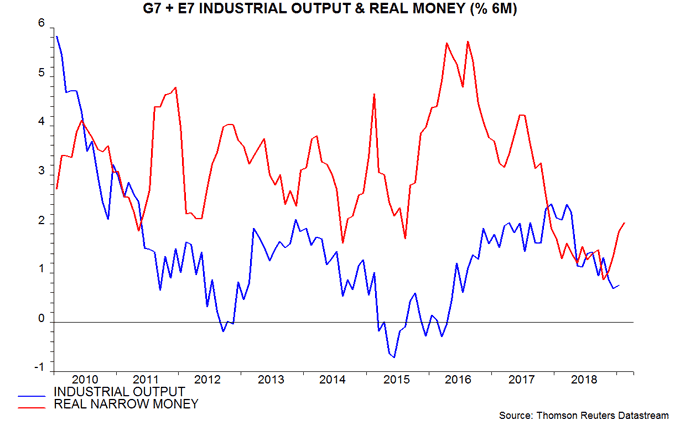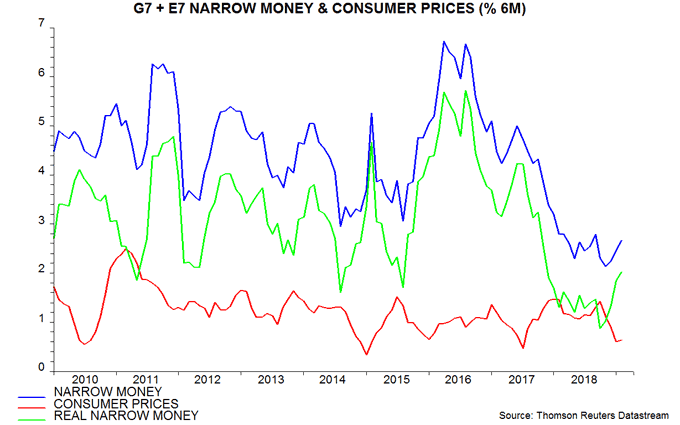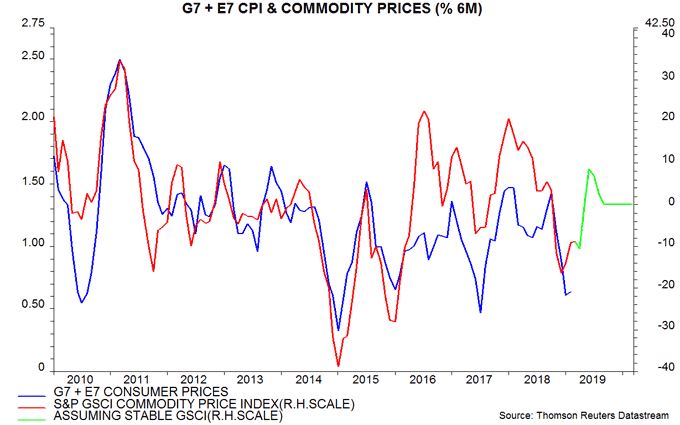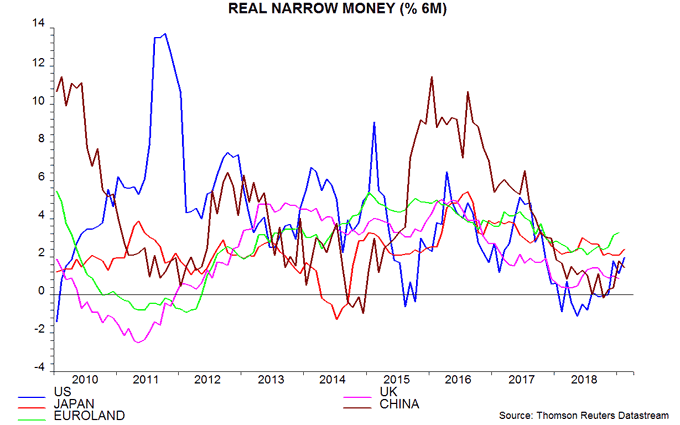Global money update: is the mini-recovery ending?
Global six-month real narrow money growth is estimated to have edged up further in February but a likely rebound in inflation through mid-year could reverse the recent recovery. Such a scenario would suggest an extension of global economic weakness into early 2020.
February monetary numbers have been released for the US, China, Japan, Brazil and India, together accounting for two-thirds of the G7 plus E7 aggregate tracked here. Assuming unchanged nominal money trends elsewhere, and taking into account February inflation data for 12 of the 14 countries, six-month growth of real narrow money is estimated to have risen to 2.0% (not annualised) from 1.8% in January – see first chart.
The 2.0% estimate compares with a low of 0.9% in October 2018 but is weak by post-crisis standards – growth was at this level or lower in only three months between October 2008 and November 2017. The judgement here remains that a rise to at least 3% is needed to suggest a significant recovery in economic momentum.
The second chart shows that nominal money growth increased in February but is only 0.5 percentage points (pp) above its recent low. The pick-up in real money growth since October mainly reflects a 0.8 pp decline in six-month consumer price inflation.
Inflation, however, stabilised in February and is likely to climb sharply into mid-year as the recent recovery in oil prices feeds through – third chart. The six-month rate could rise by 0.5pp, in which case real money growth would fall back to 1.5% if nominal expansion were to remain at its current level. This would be unchanged from a year ago (i.e. in June 2018), suggesting no exit from global economic weakness before early 2020.
Will nominal money trends pick up to offset the inflation rebound? While policy-makers have scrapped tightening plans, they have yet to embrace easing – except in China. The Fed may confirm tomorrow that QT will continue at least through mid-year. As discussed last week, Chinese money and credit trends have yet to respond to policy easing, possibly reflecting damage to the “transmission mechanism” from the clampdown on shadow banking.
The fourth chart shows real narrow money growth in the major economies – note that the latest data points for Euroland and the UK are for January not February. Euroland relative strength is consistent with a recent improvement in economic news compared with elsewhere – the Citi Euroland surprise index has crossed above a weakening US index.
The recovery in Chinese real money growth has been inflation-driven and rising energy / food prices may reverse this effect over coming months. The US rebound reflects firmer nominal trends as well as lower inflation but the former may prove temporary if QT continues into the second half.





Reader Comments